Did you know that certain birds have the ability to create holes in trees using their beaks? It’s true! These birds are called woodpeckers.
Yesterday I had the pleasure of observing a pair of them in my backyard. What caught my attention were their striking colors and distinctive markings. Upon inspection, I could tell that one was a male and the other was a female woodpecker.
Wondering how I could differentiate between them? Well, male woodpeckers typically have a patch on their heads and appear slightly larger than females. It doesn’t stop there! There are various types of woodpeckers, each with its unique appearance.
Male vs Female Woodpecker
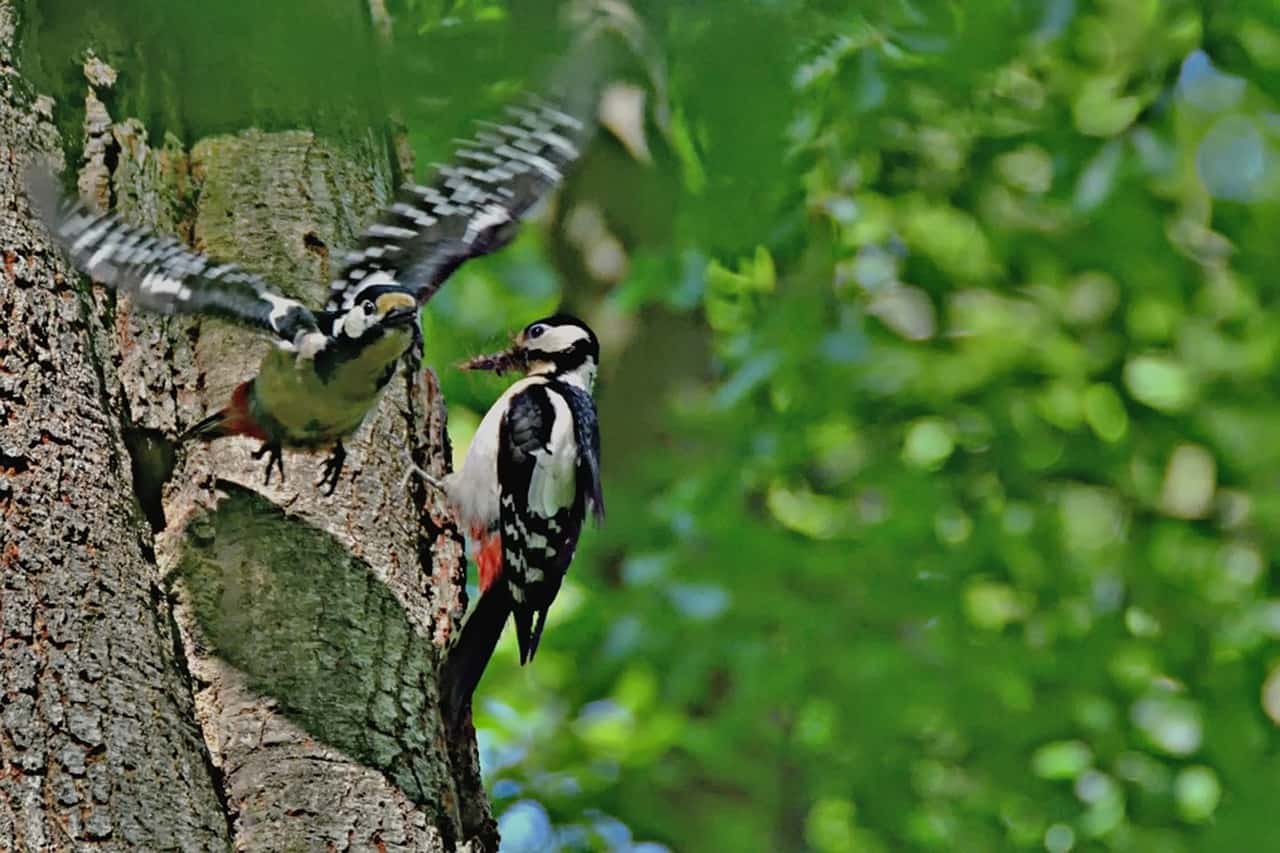
Let’s explore some of these variations to help you distinguish between female woodpeckers.
1. Pileated Woodpecker
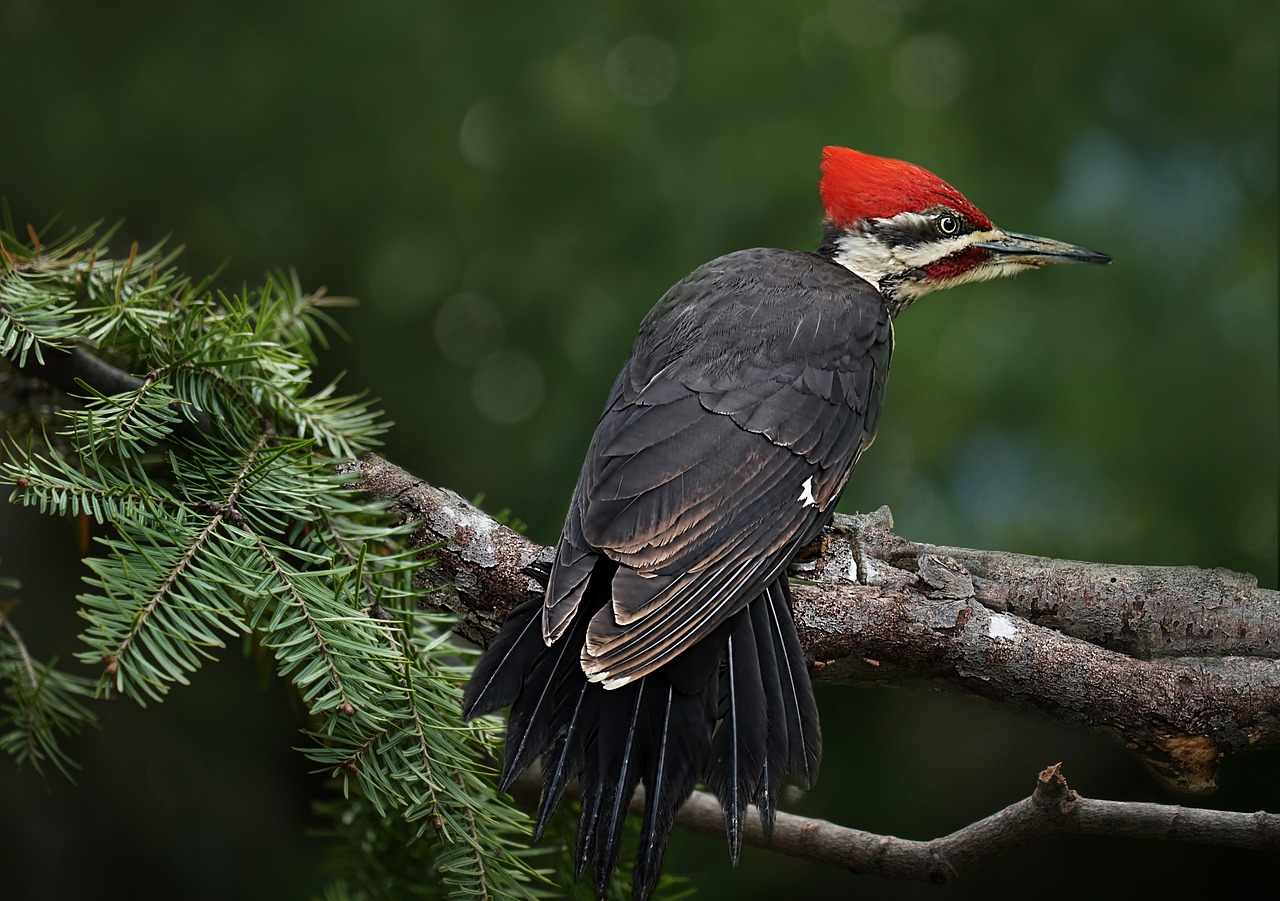
Key Features
The pileated woodpecker is one of the known species of woodpeckers in North America. These birds have a crest on their heads that extends from the forehead to the back of their necks.
Difference Between Male and Female Pileated
Male pileated woodpeckers also have stripes on their faces that look a bit like a “mustache.” The female woodpeckers also have a crest, but it stops at the top of their heads, and they lack mustache-like markings.
2. Hairy Woodpecker
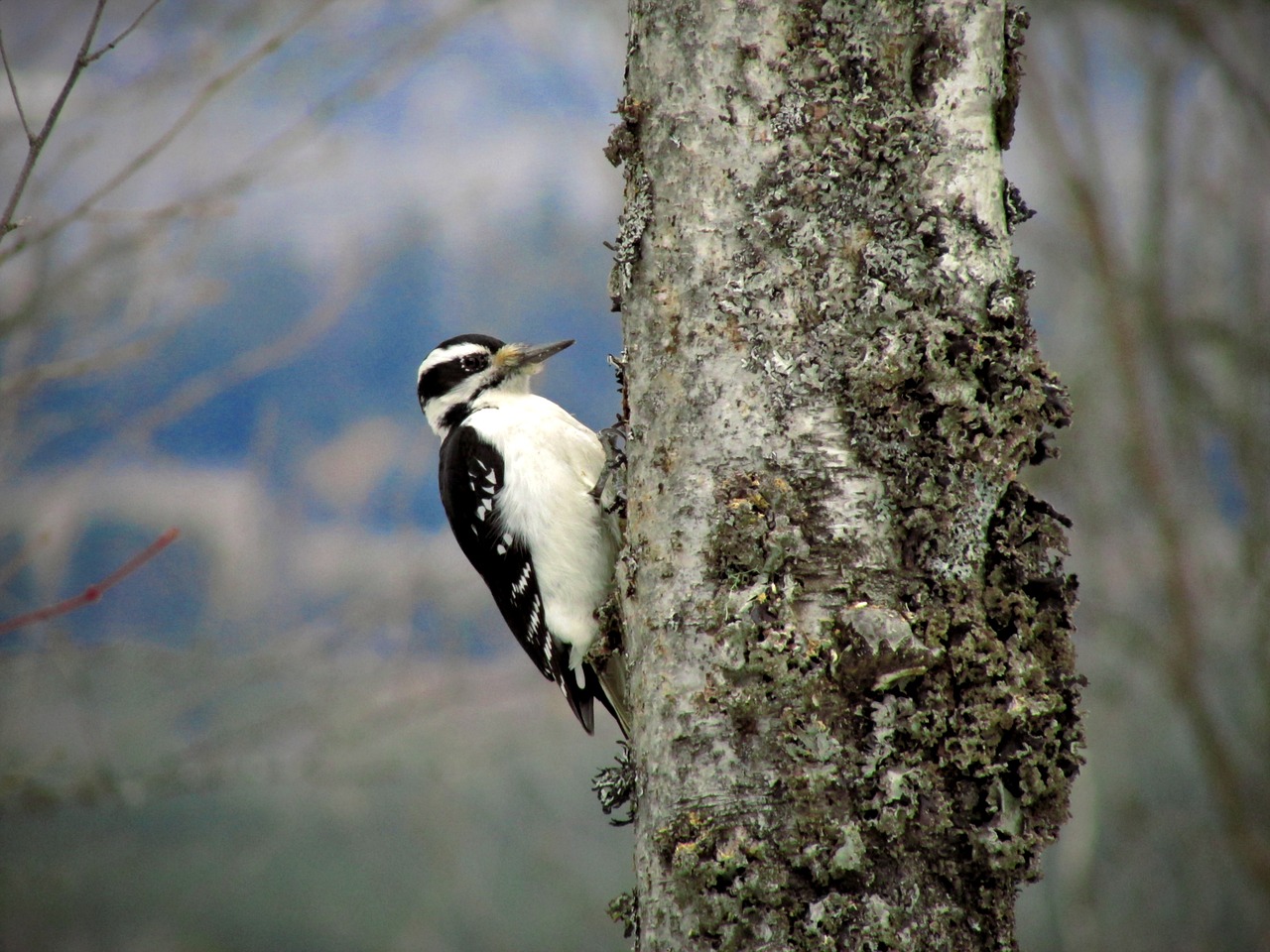
Key Features
These beautiful birds are slightly smaller than your average woodpecker. The hairy woodpecker has a combination of white feathers with markings on its wings. They also boast beaks that enable them to create holes in trees.
Difference Between Male and Female Hairy
If you want to differentiate between a male and a female hairy woodpecker, you have to look closely and pay attention. You’ll see that both males and females have wings with spots and a white belly. However, the males have a patch on the back of their heads, but you won’t see them in female birds.
3. Downy Woodpecker
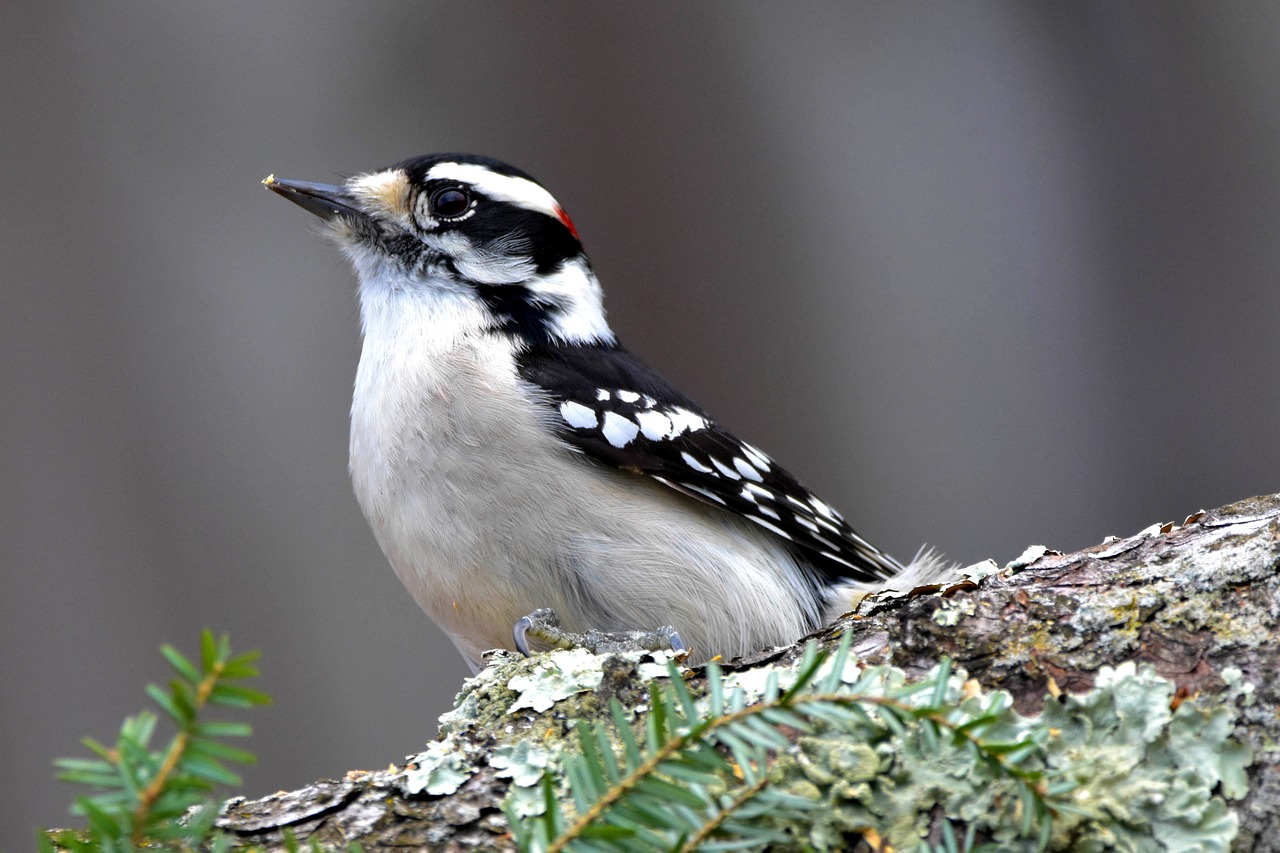
Key Features
These little birds are some of the tiniest woodpeckers you can find in North America. Upon looking closely, you can see that the downy woodpecker’s wings are decorated with spots and a noticeable white stripe on its body.
Difference Between Male and Female Downy
Just like the hairy woodpecker, you can’t see any differences between a male and a female downy woodpecker if you don’t look closely. But when you do, you’ll see that the male birds have a white stripe on their heads.
Female birds don’t have these markings on their heads, so that’s how you identify them.
4. Red-bellied Woodpecker
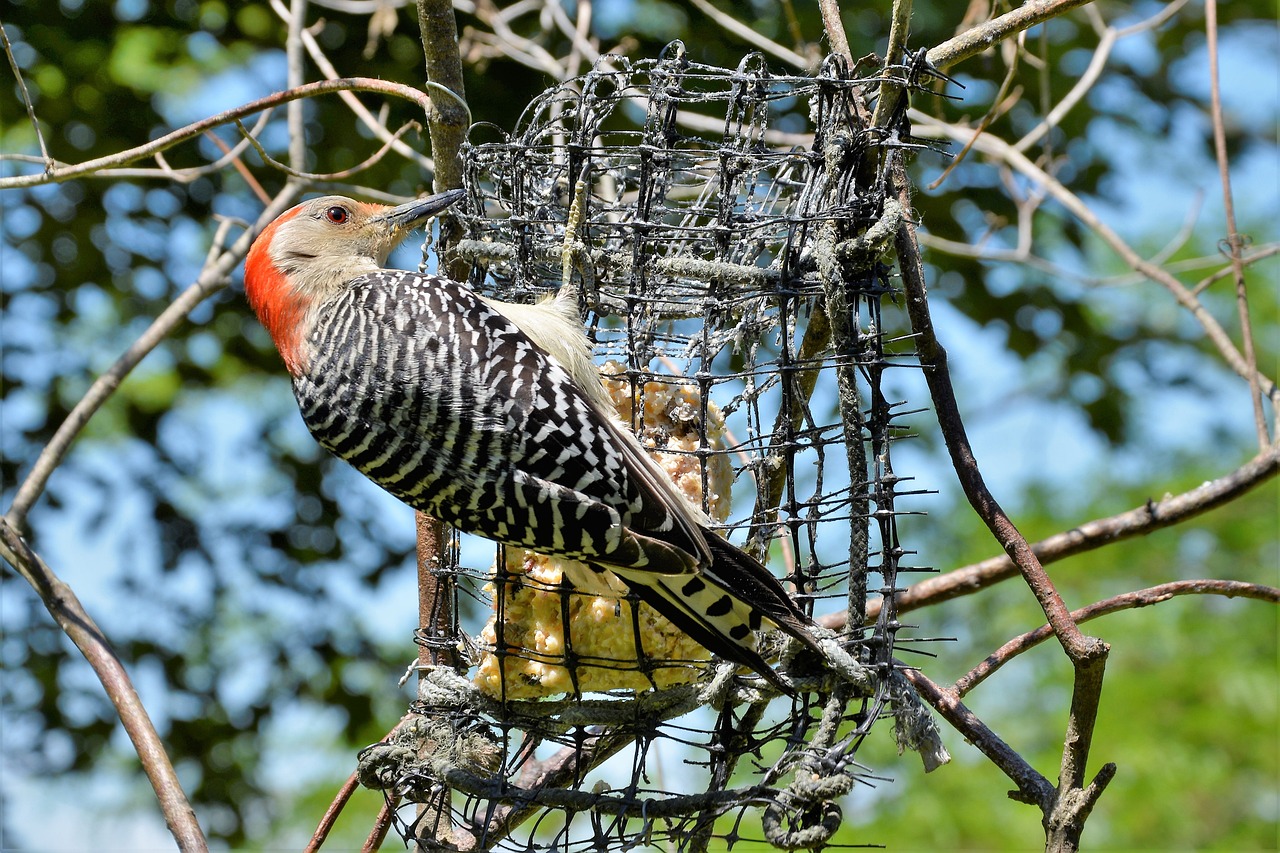
Key Features
The red-bellied woodpecker has a red tone on its belly which you might not see without a binocular. You can also see a black and white stripe on its face and a vibrant crimson-colored cap on its head.
Difference Between Male and Female Red-bellied
Male and female red-bellied woodpeckers look almost similar as they both have that reddish tone on their bellies.
However, the biggest difference between them is the striking-looking red cap that only the males have. Female red-bellied woodpeckers also have the red hue, but it’s only visible on their necks.
5. Northern Flicker
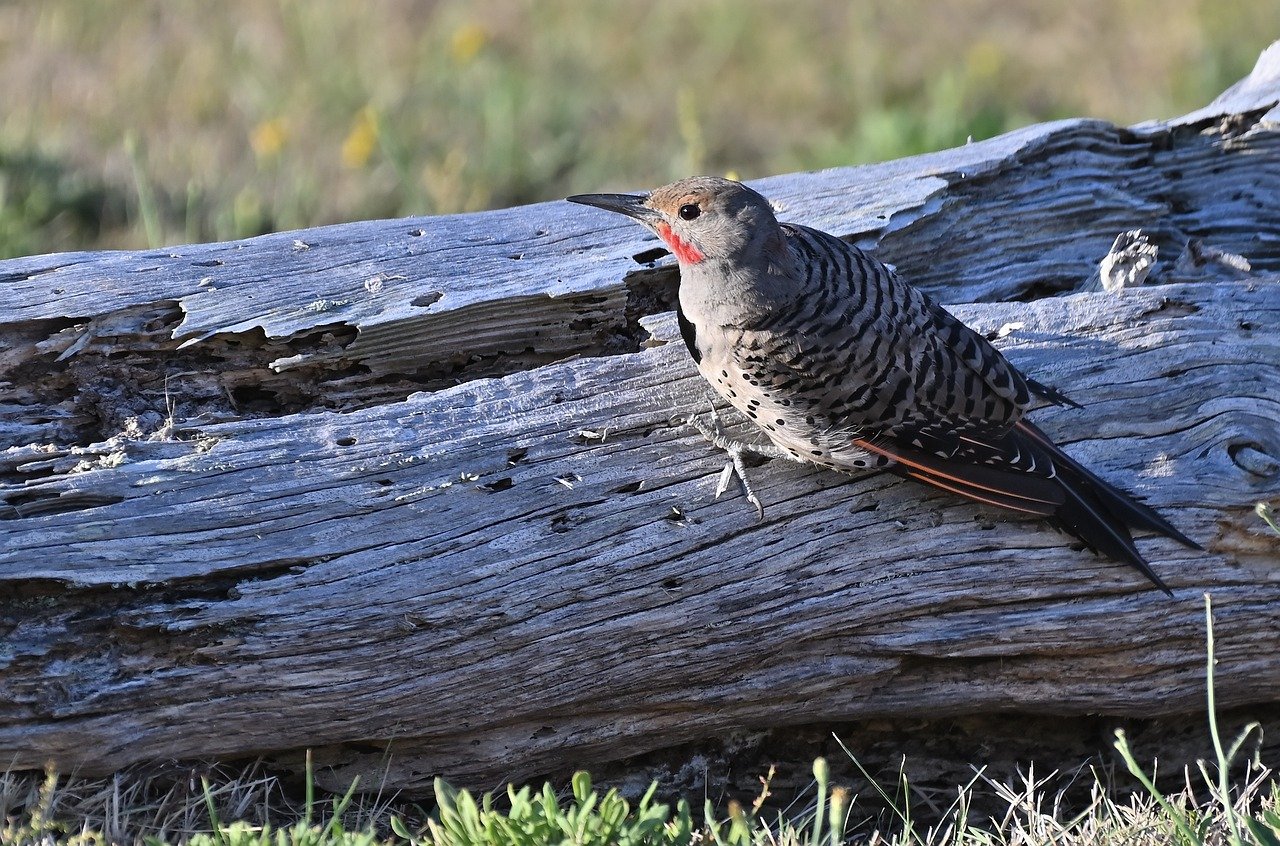
Key Features
The northern flicker is a big brown-colored woodpecker that you can easily spot without any binoculars. It has a long white tail with black stripes. They are quite common in North America, and there’s a high chance you can spot one in your backyard.
Difference Between Male and Female Northern Flicker
Male northern flickers have a grey face and a “mustache” looking red markings on their faces. You won’t find any red spots on female birds’ faces but they do have brown patches on their cheeks.
6. Yellow-bellied Sapsucker
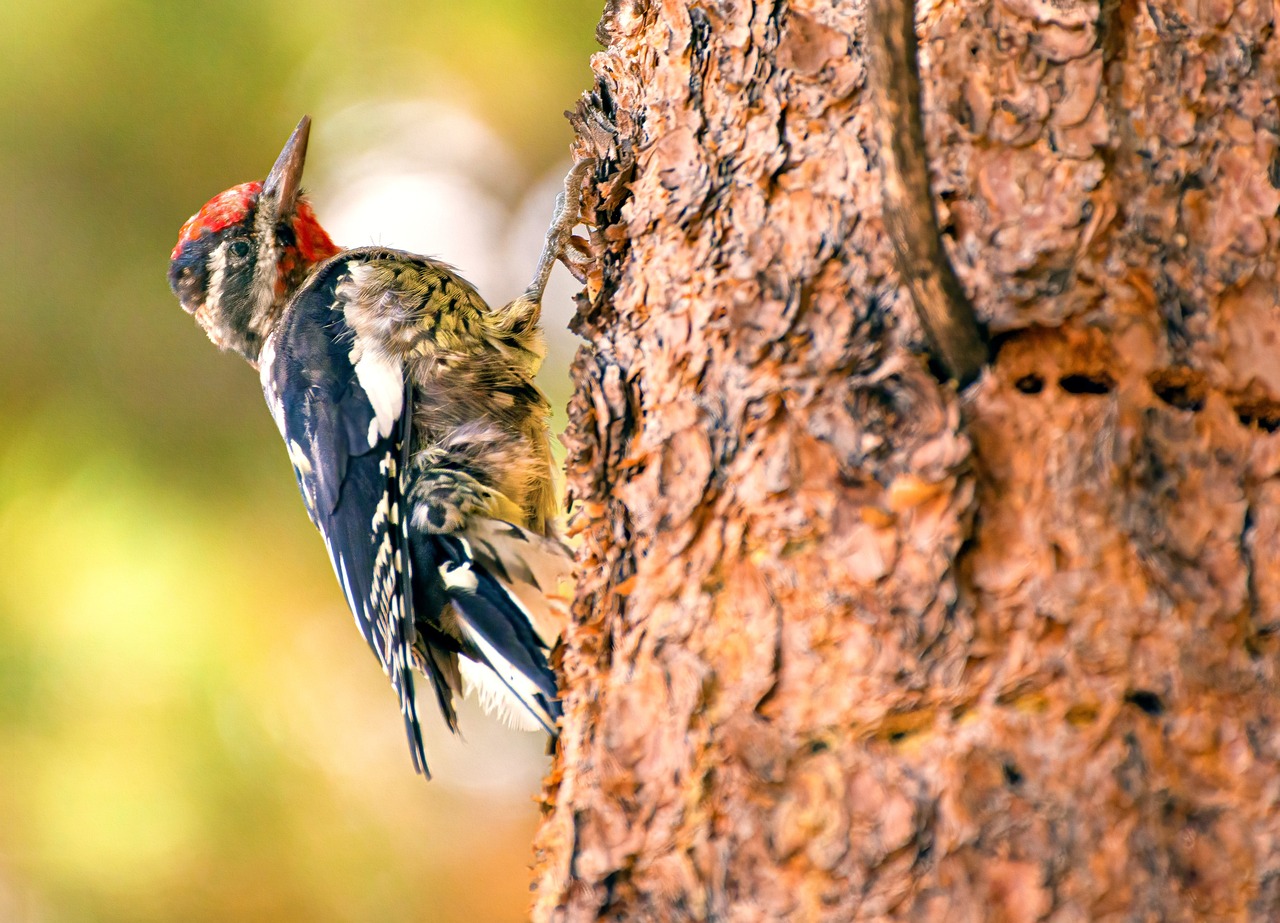
Key Features
Although their name is yellow-bellied sapsucker, you can hardly see any yellow color in their bodies. They mostly have black and white stripes with bold red marks on their heads and throats.
Difference Between Male and Female Yellow-bellied Sapsucker
Male and female bellied sapsuckers are almost similar in appearance. But, if you want to find the difference, look at their throats. The male yellow-bellied sapsuckers have red throats, while females have white throats.
7. Red-headed Woodpecker
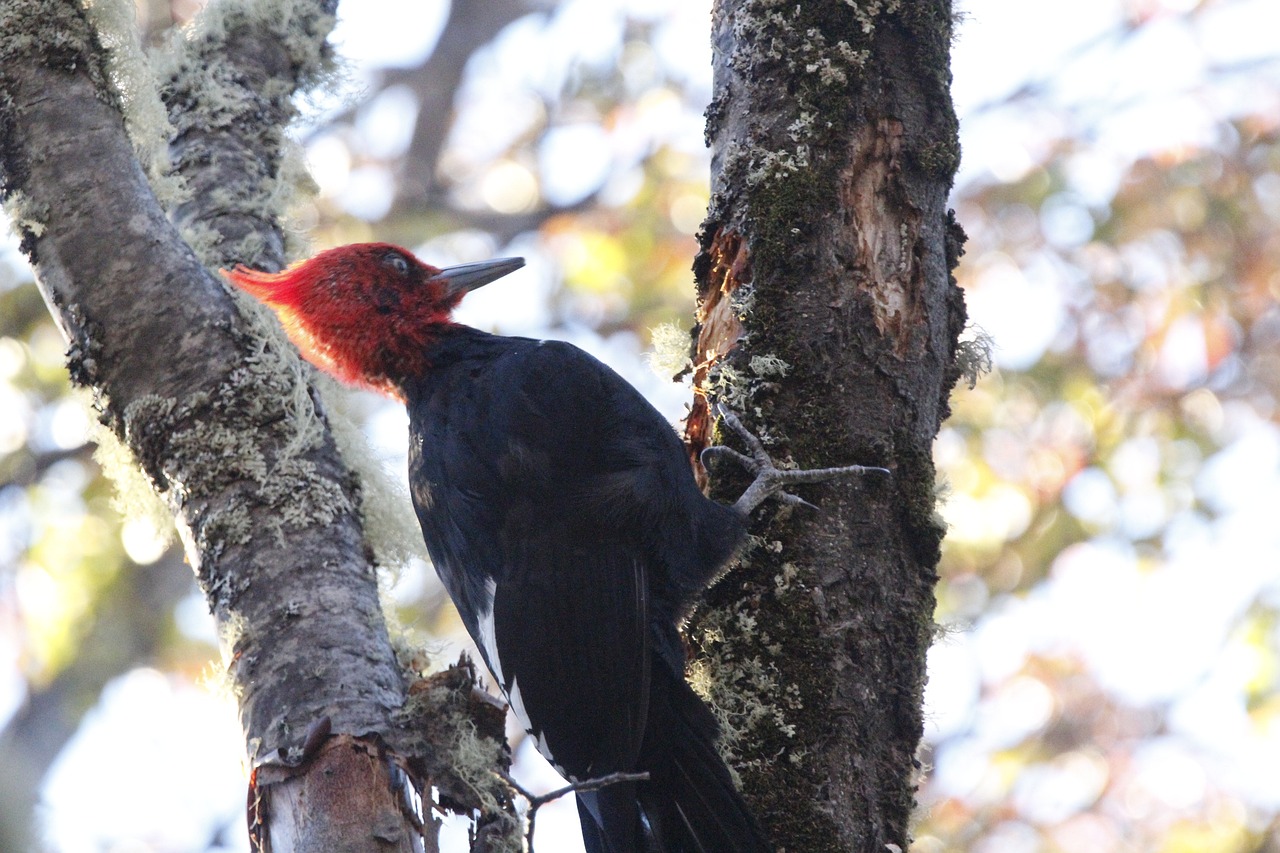
Key Features
The red-headed Woodpecker, as its name implies, has a crimson head. They are quite small in size and have a white chest. Plus, they also have a small and sharp bill as well.
Difference Between Male and Female Red-headed
The red-headed Woodpeckers are known to be sexually monomorphic. It means both males and females have the same physical characteristics. So, you can’t practically distinguish between a male and female red-headed Woodpecker without DNA testing.
8. Acorn Woodpecker
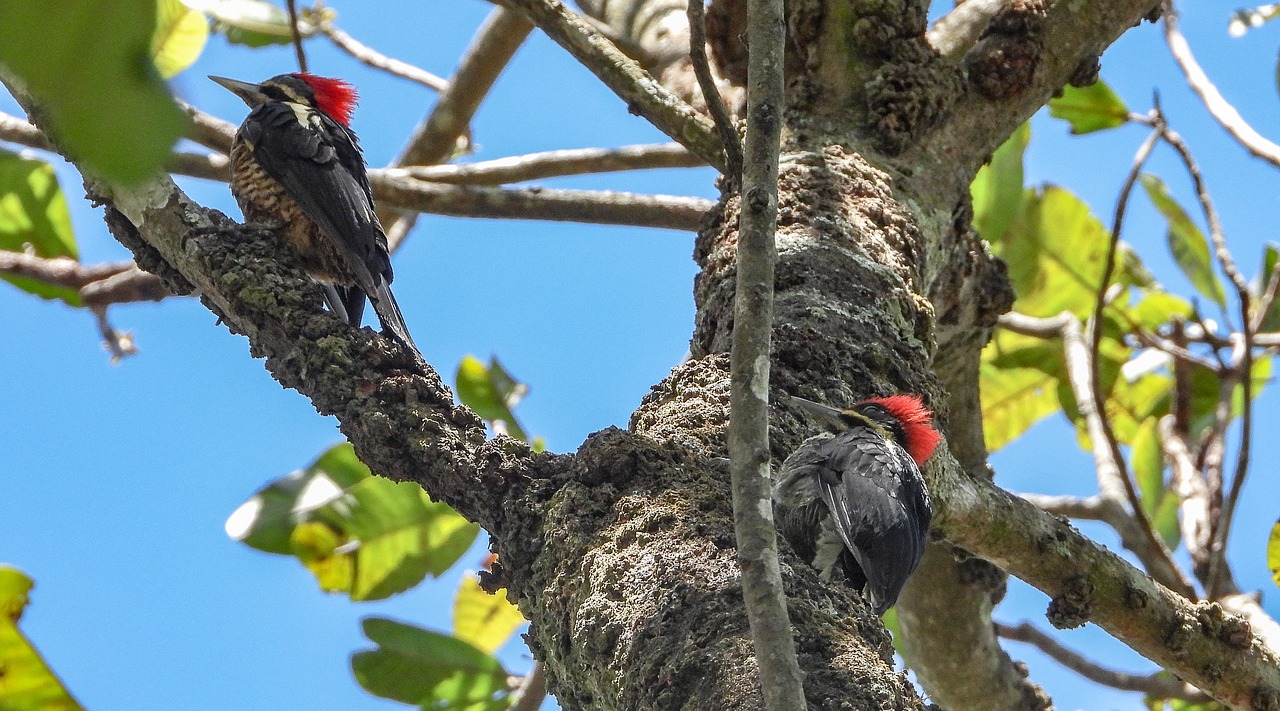
Key Features
Acorn woodpeckers are very intelligent birds because they have the ability to acorns in tree holes. They have a combination of white and red feathers on their heads.
Difference Between Male and Female Acorn
Like the headed Woodpeckers, both male and female birds of this species are almost similar in physical appearance. But there are some slight differences. For example, females have more black feathers on their heads, whereas males have more red feathers.
9. Great Spotted Woodpecker
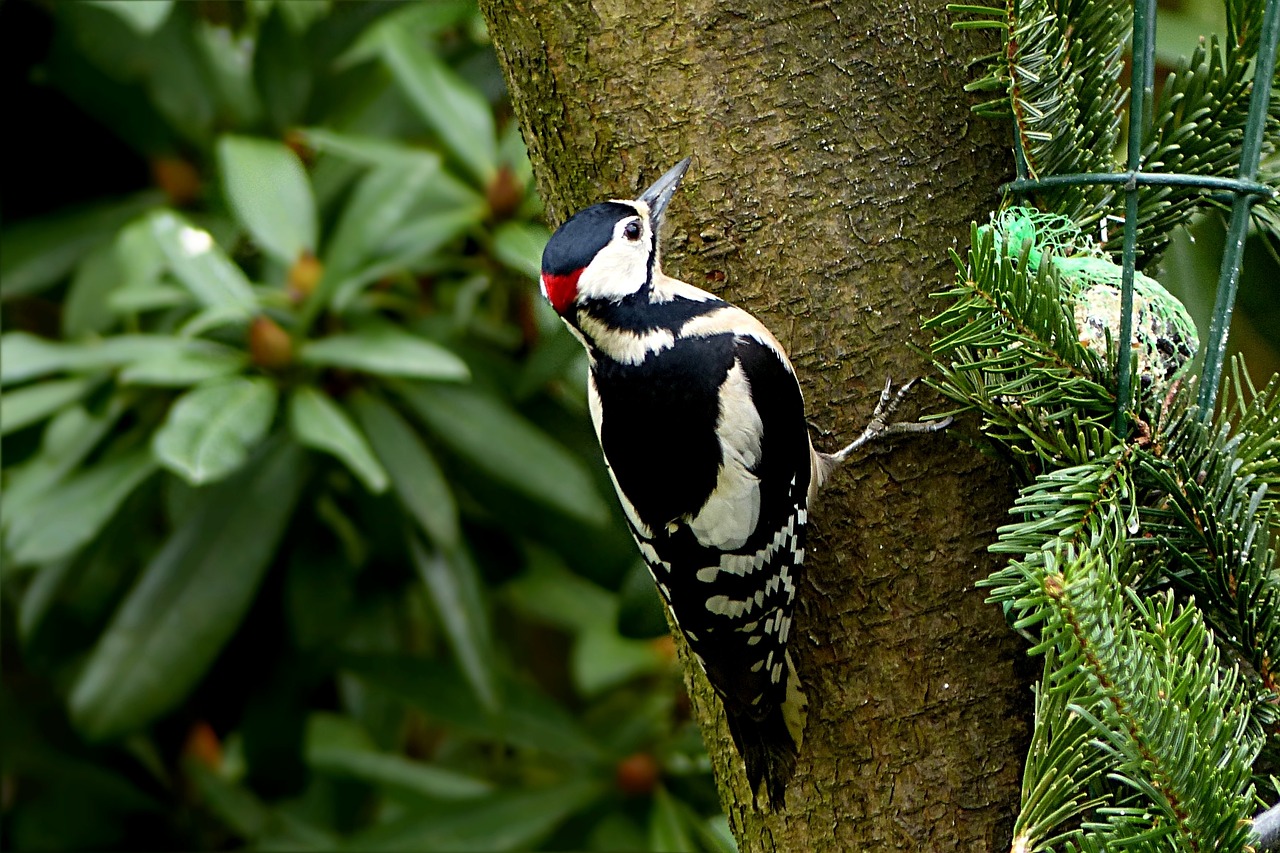
Key Features
The great spotted woodpecker is quite famous for its black-and-white pattern. If you observe closely, you may notice a touch of red on its belly as well.
Difference Between Male and Female Great Spotted
You can easily identify between a male and a female great spotted woodpecker based on how they look. Male spotted woodpeckers have a red tone on their belly, whereas females do not have this red shade.
10. Red-cockaded Woodpecker
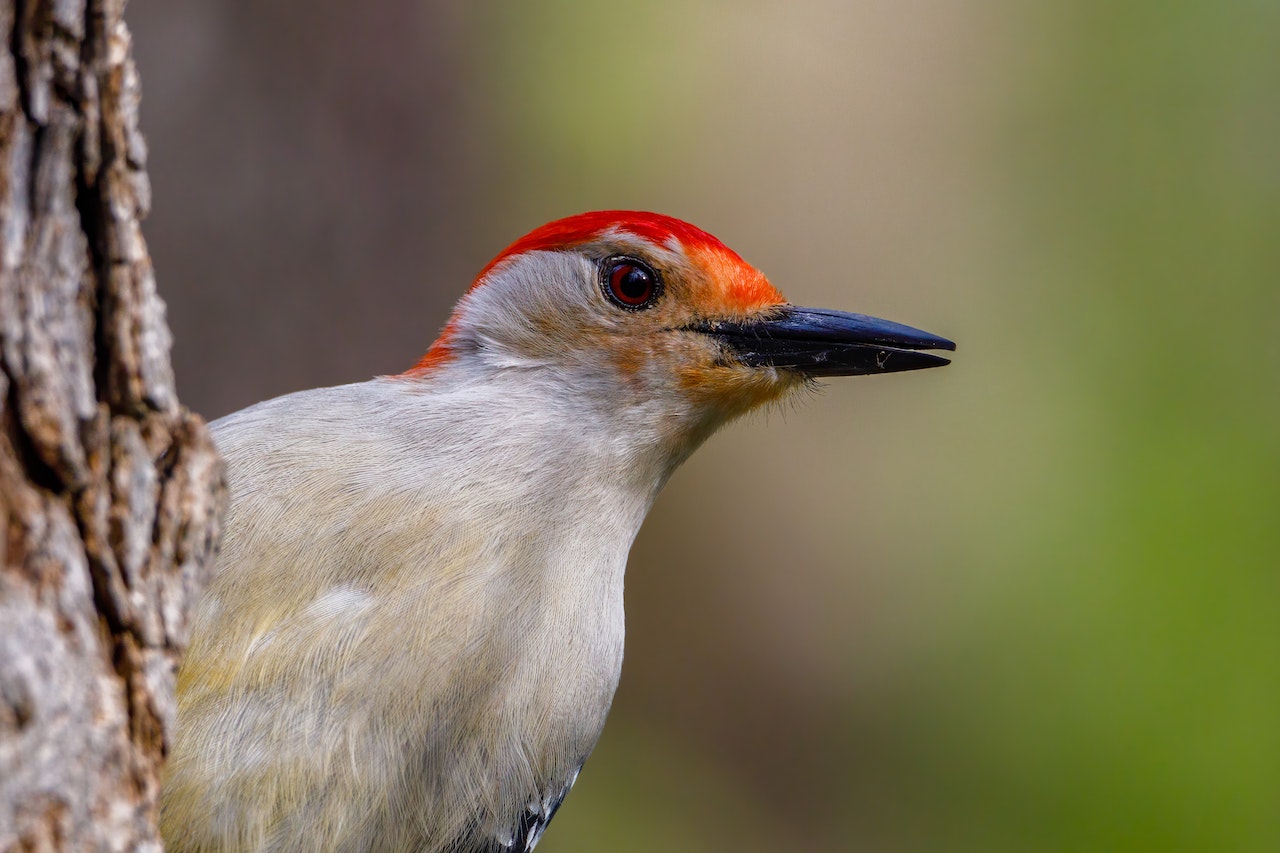
Key Features
The Red-cockaded woodpecker has white patches on its cheeks, and it is characterized by a black cap on its head. Unfortunately, these exquisite birds are currently classified as endangered species, and it’s very rare to spot one in your vicinity.
Difference Between Male and Female Red-cockaded
The male red-cockaded woodpecker is a bit larger than the female birds in size. Plus, unlike males, females lack a red streak along the edge of their cheeks.
Conclusion
Differentiating between a male and a female woodpecker can occasionally pose a challenge. But with careful observation and practice, you can develop the skills to identify them accurately.
So the next time you come across a woodpecker, take note of these characteristics, and I’m sure you’ll be able to determine the right species.

